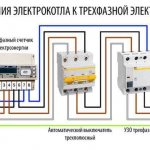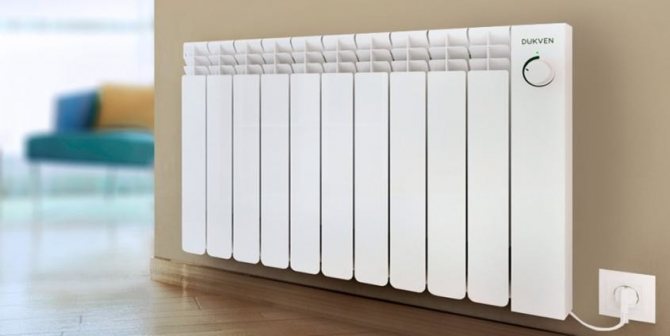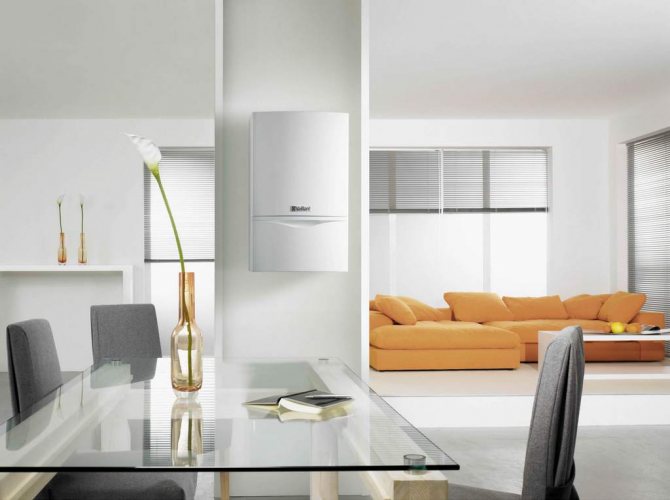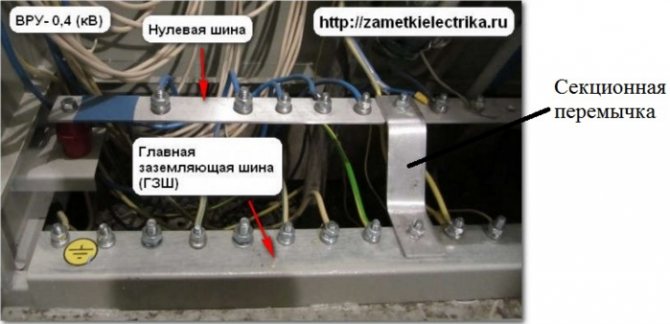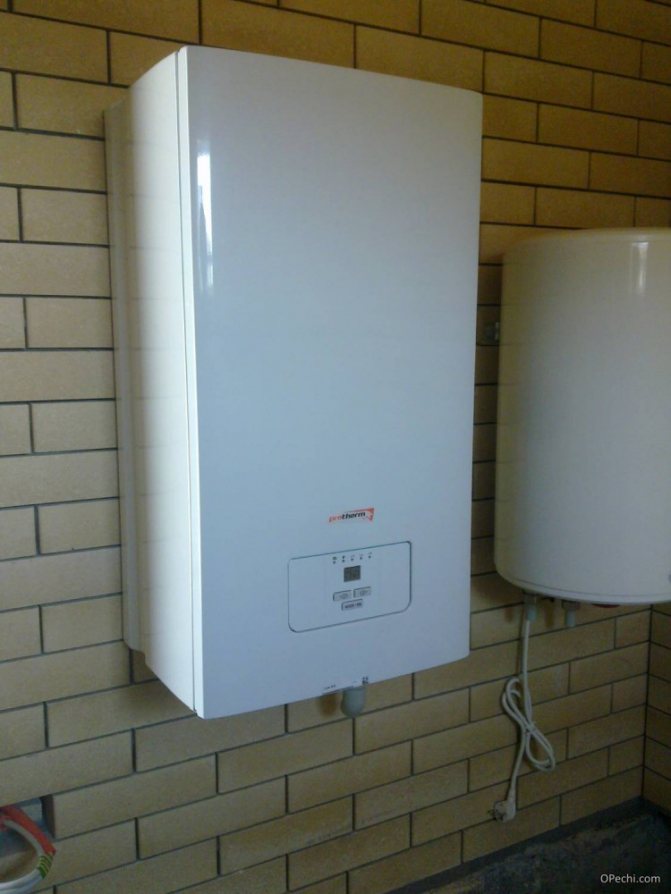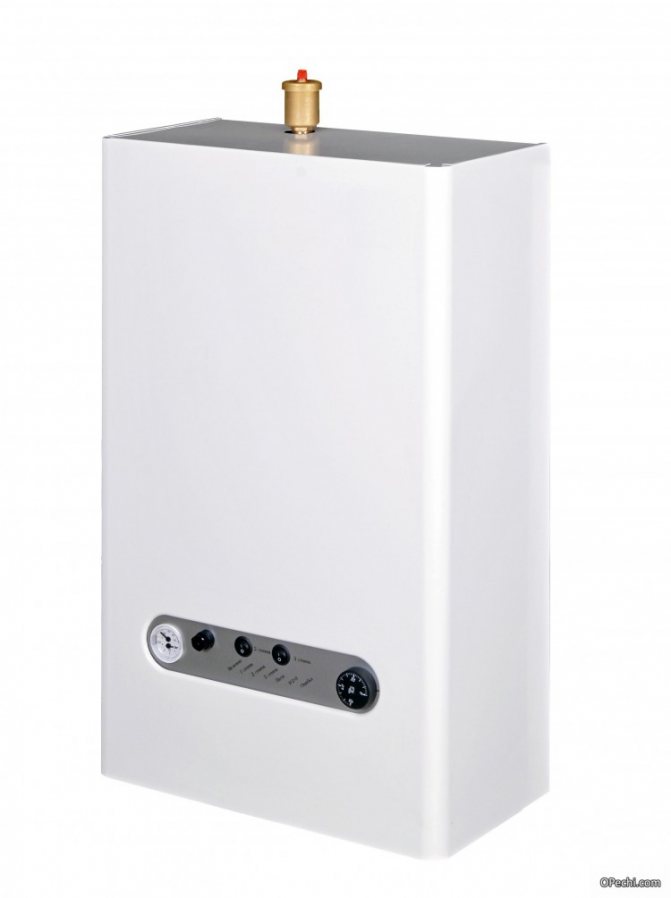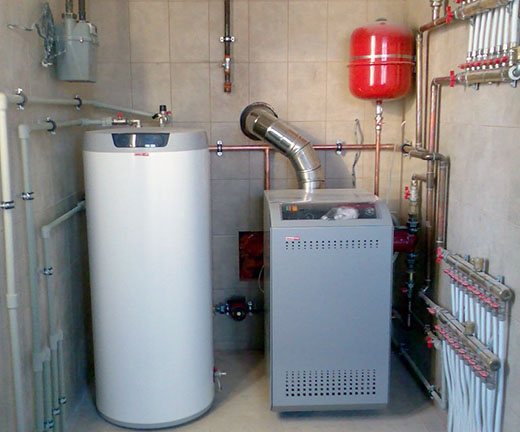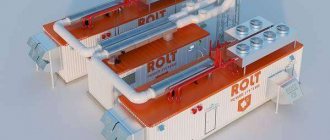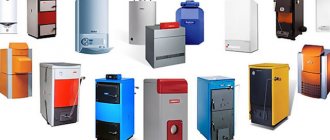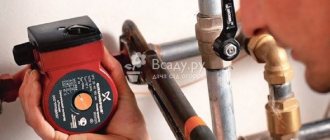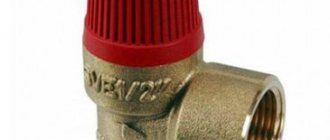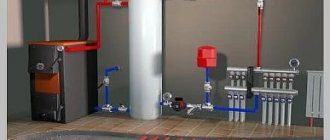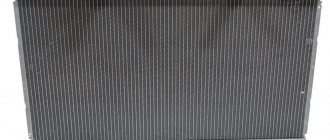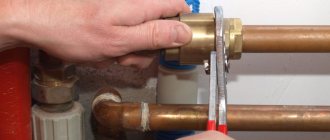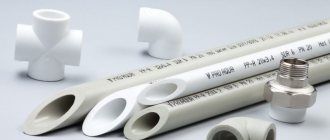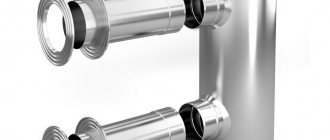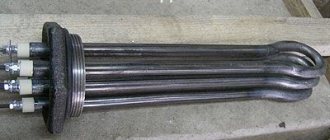ELECTRIC COTTAGE HEATING
Since only electricity is usually supplied to the dacha, then the heating system of the dacha with gas systems is very problematic. But, when planning to use an electric heating system in the country, you should take into account the limit of energy consumption, which is almost always within 5 kW. For heating a summer residence, more often than others, several methods are used.
The first method is the heating system of the summer house with an electric boiler. The advantages of this method are as follows:
- there is no combustion process;
- low cost in comparison with the diesel "brother";
- the ability to select any power;
- no need to create fuel reserves;
- fire safety (subject to the rules and regulations of the connection).
Among the shortcomings, unreliability is noted if the power lines in the country are old and worn out.
The second way is when electric convectors are used for the heating system of the summer cottage. Devices such as convectors attract with their compactness, mobility, ease of installation, efficiency at a low cost. The convector heats the cottage in a short time, the temperature level can be adjusted.
Convection systems are fireproof and do not make noise. When choosing a convector heater for a summer cottage, the required power is determined at the rate of 100 W per 1 m2 of the cottage area.
The third popular method is wall-mounted economical electric radiators for summer cottages. Their principle of operation is simple. The air is heated near the device, and then by convection or with the help of a fan, it is distributed throughout the entire area of the cottage.
The fact that the device is mounted on the wall does not exclude its fall. For this case, a protective system is provided that immediately turns off the device when it falls, which protects the house from fire in the country.
This method is convenient for giving because heating takes place within a few minutes. There is no noise from their work, so use at night will not cause any inconvenience.
Advantages and Disadvantages of Electric Heating
When choosing the type of heating for a private house, one must take into account the availability of an energy source and the amount of costs for equipment of the system. It is not always possible to connect to the central gas pipeline, and if the pipeline passes not far from the house, the cost of the tie-in can be quite high. It is worth considering the possibility of using electric boilers and comparing them with boilers for diesel and solid fuels.
pros
- Easy installation. To operate the system with an electric boiler, it is not required to allocate a separate room for the boiler room and build a chimney.
- Security. The electric boiler does not emit carbon monoxide and soot, there are no combustion products. That is why electric heating is considered the safest.
- Low installation costs. To install an electric boiler and underfloor heating, you do not need to fill out numerous papers and obtain a special permit.
- Practicality. To provide the house with heat and hot water, you do not need to stock up on firewood, coal, peat briquettes or buy diesel fuel.
- Ease of operation. The electric boiler works from the network, it is easily adjusted to the desired operating mode. A solid fuel boiler requires constant monitoring to maintain a constant temperature.
Cons and difficulties of operating electric boilers
The advantages of electric boilers are attractive. But they also have disadvantages, and very significant ones.
- The high cost of electricity.
Note! Costs can be reduced several times due to the thermal insulation of the apartment, the use of preferential electricity tariffs and the choice of a device with precise control.
- Requirements for the type of radiators. In an electrically heated system, it is uneconomical to use cast iron and steel batteries. It is advisable to choose bimetallic or, in extreme cases, aluminum heating devices.
- Complete dependence on power supply.
- Demanding on the quality and composition of the coolant.
- When installing equipment that consumes more than 9 kW, instead of a standard 220 V network, a three-phase 380 V network will be required. If the apartment does not have one, a special permit must be obtained for the arrangement, which is not always possible to do in old houses.
USEFUL INFORMATION: Which windows are better: plastic or wooden?

Before deciding on the purchase and installation of an electric boiler, you need to weigh all the pros and cons, calculate the approximate electricity consumption for a month and think how tangible it will be for the budget.
Advantages and disadvantages of electric heating in an apartment
Choosing a heating system for a city apartment is a complex and responsible process. For residents of apartment buildings with central heating, the issue of heating housing is easy to solve. It's getting colder, so wait for the heating to turn on. The category of citizens who decided to take care of their own comfort on their own faces a difficult and difficult choice - which type of autonomous heating for an apartment in a multi-storey building to give preference
It is important for the landlord that the system is as efficient as possible, safe to operate and economical. Of all the types of autonomous home heating existing today, heating with electricity meets all of the listed criteria.


The heating season, which many of us are looking forward to, for electrically heated apartments now does not depend on a specific date. With the help of electricity in your apartment, you can at any time achieve an acceptable temperature, create the necessary comfort and microclimate.
Decentralized heating
The best option for independent heating is the installation of an individual electric boiler in each apartment. What are the advantages of using this type of electricity:
- The system has no heat loss. They can arise only due to external factors - poorly insulated surfaces, the intensity of the use of doors or windows, and so on.
- The user sets the temperature inside the room independently - he does not depend on the initial supply of the heating medium, unlike the first option.
- The apartment is heated at any time, regardless of the season or time of day.
- With such a system, it is easy to make a warm floor yourself.
- Payment for heat supply depends only on the electricity used. There are no side surcharges - for the reconstruction of equipment, repair of networks and other things, which is how they like to burden apartment owners so much.
- The unit does not take up much space, does not require a separate outlet for combustion products, it has enough power to heat a large area + generate energy for heating water.
The downside may be the purchase of a package of documents that allow you to mount these networks in the apartment and remove unnecessary radiators. And also to obtain approval from the services of power systems, which must first calculate the possibility of installing an individual boiler - both actions are fraught with bureaucratic red tape, but with the user's persistence, it is possible to achieve a decision in their favor.
No. 6. Fan heaters for summer cottages
A fan heater is another way of back-up heating of a country house. It is not possible to constantly maintain the required temperature for them.Nevertheless, fan heaters have earned great popularity, as:
- are inexpensive;
- compact and mobile;
- allow you to quickly warm up the room;
- easy to operate.
Among the disadvantages are inefficiency, fire hazard, noise and unpleasant odor, since dust and dirt particles get onto the red-hot spiral during operation. You cannot warm up a large area with such a device, but for this there are heat curtains and heat guns that work on the same principle as a fan heater.
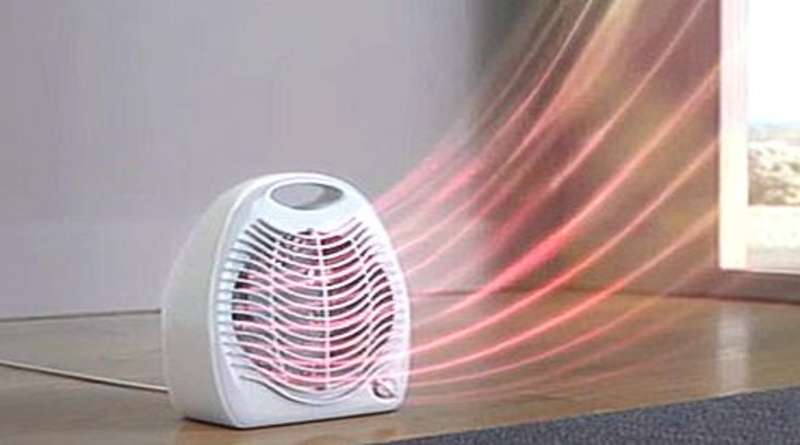

The device is quite primitive: air masses are heated due to contact with a heated heating element, and move due to the presence of a fan. Differences only in the type of heating element (spiral is the cheapest, but dangerous, and ceramic is safe, but expensive), power (0.4-2.5 kW), type of control, in the form and shape of the fan.
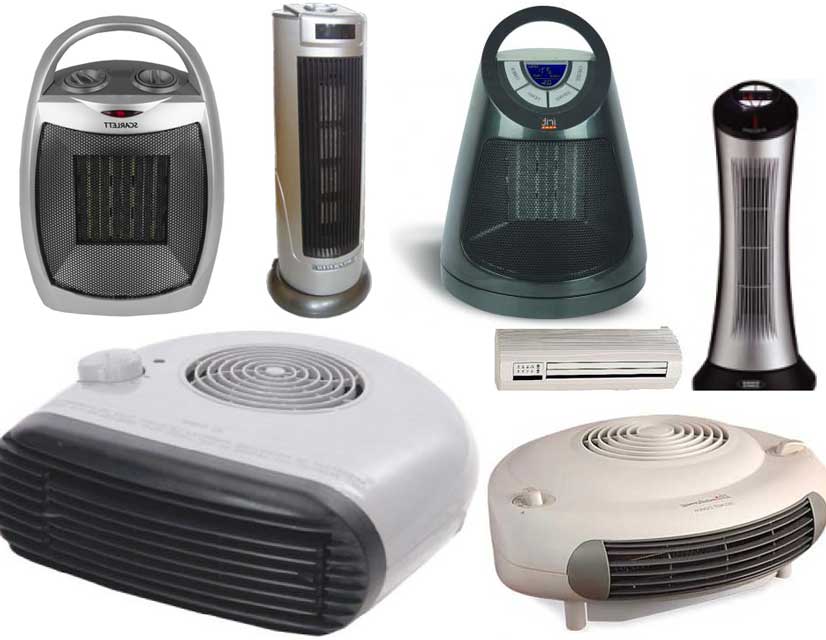

Electric heating for summer cottages
In winter, the dacha is used quite rarely, as a rule, several times a month. Therefore, the organization of the heating system of a country house is especially acute. Since the gas main does not pass in every summer cottage, then when designing a heating system, you need to focus on the use of electricity.
Installation of water heating with an electric boiler or installation of a "warm floor" system will be an irrational investment. In addition, every time you arrive at the dacha, you will need to pour water into the system, and drain it before the county. If this is not done, the water in the pipes will freeze and disable the heating. Heaters must meet a number of requirements.
Primary requirements:
- easy to operate;
- easy to install;
- practical;
- mobile.
Electric boilers for heating an apartment (220v - economical): installation rules
Although electric boilers for heating an apartment (220 W is an economical option) do not require specially equipping a room for them, a few nuances will still have to be taken into account when installing them:
- In a pre-selected location you need mark at what height the boiler will be attached and make grooves in the wall for laying the cable and installation of a junction box.
- Install the boiler according to the instructions attached to it, hide all cables and seal the place of their wiring in the wall.
- Connect the device to the electrical wiring and pipes of the heating system.
To make the electric heating of an apartment cost-effective (cost per month), electricity consumption should not exceed the limit specified in the contract.
This can only be done by investing in additional items such as a thermostat or programmer.
They allow you to set economy programs, which, for example, reduce the temperature of the system at night or when no one is in the apartment during the day.
In conclusion, we can say that a double-circuit electric boiler is the best option for heating an apartment when it is the main source of heat. It is capable of heating large areas, is safe, harmless and cost-effective, provided that special regulators are installed on it. In addition, electric boilers are cheaper than, for example, gas boilers, and they are easy to install.
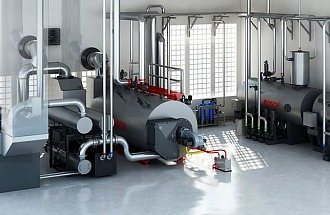

Not so long ago, GazSintez Plant began to manufacture and supply block-modular boiler houses based on electric boilers with a capacity of 35 to 3000 kW... Since then, we have often received questions from customers about how profitable and effective it is to use electric boiler rooms for heating industrial facilities, what are their advantages and possible disadvantages, as well as reliability and uninterrupted operation. After all, everyone knows the tariffs for electricity, especially in industrial volumes.
In this article, the director of the GazSintez Plant will consider the positive aspects of using electric boiler houses, their pros and cons, as well as the prospects for their application.
So, electric boiler houses, whether industrial or household (private), can act as both the main and backup source of hot water supply and heating for both industrial, agricultural, administrative and residential facilities and premises with an area of up to 30,000 m 2. When compared with the more familiar gas boiler houses, in the case of heating an object of such an area, the installation of a boiler house with a capacity of at least 3.0 MW is required.
Electric mini boiler rooms for private use
The use of mini-boilers on electricity for heating and hot water supply of private houses and cottages is quite common, especially in non-gasified areas of the country. Depending on the required power, an electric boiler can be installed separately in the basement of the house. If it is necessary to increase the power of more than 80 kW (in the case of apartment buildings), it is recommended to install free-standing electric mini-boiler rooms. The second option has a more complex device and consists of a block housing and a set of technological equipment typical for traditional block-modular electric boiler houses: boilers, heat exchangers, pumps, water treatment systems, meters, pressure gauges, etc.
|
|
There is often an opinion that electric boilers are expensive equipment to operate, especially in connection with electricity prices. But, as already noted by numerous users, with the correct design of the heating system and good thermal insulation of the building, heating with electricity becomes quite competitive, even in comparison with gas. In addition, in non-gasified areas there are preferential electricity tariffs - about 30% less.
ELECTRIC HEATING OF THE APARTMENT
Heating an apartment with electricity means being independent of the central steam heating, which sometimes fails. Electric heating of an apartment in terms of costs is considered one of the cheapest when it comes to the purchase and installation of equipment. But electricity tariffs are forcing many to abandon this option.
The second snag is the lack of power wiring. In fairness, it should be noted that this limitation is not so critical for new apartments.
This type of heating, albeit not cheap, is reliable and environmentally friendly. Maintenance is the most primitive, regulation and automation is simple and convenient, there are no harmful emissions. Autonomous electric heating of an apartment, of course, is expensive to use, but as an additional heating method, electricity is beyond competition.
POPULAR TYPES OF ELECTRIC HEATING OF APARTMENTS
Warm floor.
Electric underfloor heating, as an addition to the main source of heat in an apartment, is most often installed in the hallway of the house, in the kitchen and in the bathroom. Less often - on balconies, in baths. Installation of underfloor heating in an apartment is divided into several types. Firstly, it is laying in the thickness of the screed, secondly, laying on top of the screed under the tiles, and, thirdly, directly under the floor covering.
Electric radiators.
These devices are similar in design to oil systems. Inside there is also a heating element, oil, steel outer ribs. The difference is that electric radiators can be hung on the walls in the apartment. This allows you to quickly warm up the house. Another advantage is that oxygen in the apartment is not burned out.
The power of the radiators varies considerably. But models with a power from 1 to 2.5 kW are considered universal and suitable for any apartment. At the same time, you can significantly save money. It is enough to install a multi-tariff electricity meter and operate the radiator at night.
Infrared heaters.
These electrical appliances are used both as the main and as a secondary source of heat in the apartment, depending on the power. The calculation of the power is carried out on the basis that 100 watts are needed for 1m2.Infrared heaters are divided into stationary and mobile by the type of attachment.
According to the radiation source - into ceramic, tubular and carbon fiber, which are considered energy-saving. The manufacturer's declared savings are up to 40-60%, which, however, seems doubtful to many.
The advantages of electric heating include high efficiency, small dimensions, durability, ease of installation of heaters, the possibility of wall and floor installation, no need to issue additional permits for use. The disadvantages are the high cost of electricity, the need to revise the existing electrical wiring.
2012-2020 All rights reserved.
The materials presented on the site are for informational purposes only and cannot be used as guidelines and normative documents.
Types of electrical systems
Before deciding whether to connect electric heating in your apartment or not, you need to familiarize yourself with the legal side of the issue. As a rule, in the contract for the supply of electricity to residential premises from the relevant organization, possible limits are indicated (often they are 3-5 kW / month) or it is fixed in small print that the connection of electric heating in an apartment is strictly prohibited.
In the first case, you need to think about the profitability of the venture, in the second, abandon it altogether.
In the event that everything is in order and the supplier does not impose any prohibitions, you can proceed to studying the question of how to install individual electric heating in an apartment:
- Electric boilers- a fairly economical form of heating an apartment, at the same time environmentally friendly and safe. They are easy to install, they are easy to control, and they work silently. If an electric boiler for heating an apartment was correctly selected and installed, then its efficiency reaches 98%, which is facilitated by its main worker element - heating element.
Electric boilers are convenient in that they can be dismantled and moved to a new place at any time, since they do not require a separately equipped room. Even if, according to the law, permits may be required for its installation, it will not be difficult to obtain them.
Infrared heaters, previously used exclusively in industrial areas, have already won the hearts of many consumers. Their advantage is that by emitting infrared waves that are useful to humans, they heat everything that is in the room (people too), and the heat then spreads throughout the entire area. them as the main source of heat, then you need to be prepared for the fact that in terms of power they are designed for 1 kW per 10 m2.
In order for infrared heaters to really work effectively, the room should be insulated before installing them, otherwise it will be too expensive to heat an apartment with electricity. The cost of electricity tends to rise, as do the tariffs for other utilities. In order not to regret the investment, you need to calculate how many heaters are required based on the area of the apartment.
- Convection heaters outwardly they look like heating batteries with the only difference that inside them there is not a coolant, but heating elements with a fan that drives heated air into the room. Modern models are equipped with a regulator, thanks to which you can significantly save electricityby setting the heating to a minimum when there is no one in the apartment. Usually, one convector is enough for a standard room, but to connect them, you will need wiring with a cross section of at least 2.5 mm2 with a separate circuit breaker.
- When choosing oil heaters as the main source of heat in the apartment, you can select devices with the required number of sections and power. Inside them there is a special mineral oil heated by 2 heating elements.They can reach +150 degrees in minutes, but pose a threat due to the possibility of getting burned when touched.
Oil heaters have either timers or thermostats.As practice shows, for small rooms, the best option for electric heating is oil or infrared heaters, while for large areas (3 rooms or more) - electric boilers for heating an apartment.
Choosing an electric boiler for heating and hot water supply of a private house
Electrical equipment for heating is divided into types by classes, purpose, power. Depending on the type of installation, electric boilers are wall-mounted and floor-standing. The first option has a more compact size, which does not affect its performance in any way.
There are also single-phase and three-phase devices. Models with one circuit provide only heating of the coolant in the system, double-circuit boilers serve both for heating and for providing hot water. According to the heating method, boilers are induction, electrode, with heaters of the TEN type.
Important: For both heating and hot water supply, only boilers with heating elements can be used. For other types of electrical equipment, the presence of a second circuit is structurally impossible.
Therefore, in addition to an electrode or induction electric boiler, you will need a boiler or instantaneous water heater.
Induction type electric boilers
The induction boiler has the appearance of a metal cylinder. Due to the design features, induction boilers are quite heavy. For example, devices with a length of 40 cm can weigh between 23 and 30 kg.
The main elements of the complete set:
- Dielectric alloy body;
- Electrical insulating layer;
- Ferromagnetic core less than 1 cm thick;
- Thermal sensor;
- Inlet and outlet connecting pipes.
The circulation pump, expansion tank, circuit breaker and electronic thermostat are not included in the package and are installed separately.
Devices operating by the type of electromagnetic induction are considered the most reliable and efficient.
Simplified principle of operation:
Reliable 220 volt electric boilers for home heating
When preparing the rating of the best household electric boilers 220, a considerable number of various factors were taken into account - the company, capacity, the possibility of simultaneous supply of heat for heating and hot water supply, the highly economical process of obtaining energy.
Among the best cheap wall-mounted boilers 220v stand out:
- EVAN Warmos-IV-5. The budget device of Russian production, with a wide range of functionalities. Despite its low power of 5 kW, the boiler works very well in the "warm floor" system, and the "anti-freeze" function makes it indispensable for private houses with an area of up to 60 m2, which can be heated shortly before the arrival of residents. As of 11/01/2019, the unit price is 15,520 rubles.
- RusNIT 209K electric boilers of Russian production, with structures well adapted to rural living conditions. A boiler with 100% automation of the technological process, smooth regulation of the heating water temperature in the range from 40 C to 80 C, is capable of efficiently and quickly heating the area of the room up to 100 m2. As of 11/01/2019, the unit price is 12,890 rubles.
- Thermotrust ST 9 is the best price of the Swedish brand with a complete assembly in Russia. The 9 kW model is designed to be connected to a 220 V household power supply, and operates with an efficiency higher than 93.0%. Contrary to its budgetary price, the generator is equipped with block stainless steel heating elements. As of 11/01/2019, the unit price is 11,814 rubles.
The best wall-mounted electric boilers according to the criterion "price - quality"
- Protherm skat 9 kr 13 belongs to the new products of 2020. Slovak apparatus with a soft start and full automatic process safety.A wide range of capacities from 6 to 28 kW, which makes it possible to create a different heating system for an individual house or apartment, using them as the main or backup source of heat supply. It is possible to connect to them various components for control, accumulation and exchange of information - electronic temperature sensors, programmers, solenoid valves and devices for using a differential meter to use cheap electricity at night. As of 11/01/2019, the unit price is 32,340 rubles.
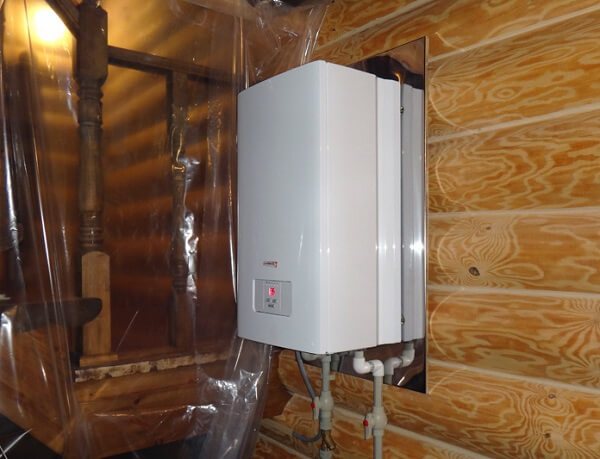

Number 3. Heating a country house with an electric boiler
The main part of an electric boiler is a heat exchanger, a tank with heating elements. They heat the coolant (water, antifreeze, oil), which circulates through a system consisting of pipes and heating radiators - everything, as in the case of a gas or oil boiler. In addition, the system often includes an expansion vessel, a circulation pump, and a safety valve. Induction and electrode boilers work a little differently.
The advantages of this heating method are obvious: no smoke and no need to equip a chimney, quiet operation, safety, high efficiency (up to 99%), ease of operation and temperature control. Due to the high cost of electricity, such boilers are installed mainly when a country house is not used for permanent residence. In addition, do not forget about the need for good electrical wiring.
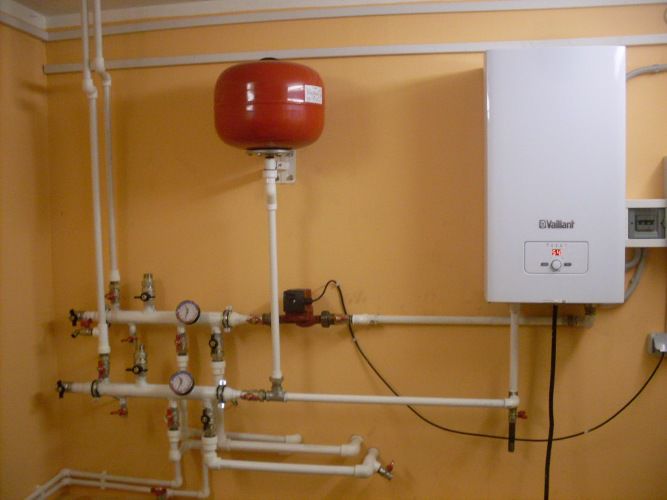

Electric boilers of the following types can be used in the heating system:
- Heating elements boilers are the simplest and most popular devices. The principle of their work can be compared with a conventional electric kettle. Heating elements, of which there are usually 3-4 in the boiler, heat the coolant (water) in a flow-through mode. Depending on the required temperature, the heating elements are switched on together, one by one or in groups. Heated water circulates through the system, and circulation pumps are usually used for better pressure and circulation. The power of such boilers is from 3 to 50 kW, there are models operating from a single- and three-phase network. Advantages of heating boilers: compactness, low price, ease of installation. A significant drawback is the formation of scale on the heating elements, which leads to an increase in energy consumption and a gradual failure;
- electrode boilers operate without heating elements. Most of them are electrodes. When current passes from one electrode to another through the liquid, the latter heats up under the influence of its own resistance. Antifreeze is used as a liquid. The power of the electrode boilers is 5-25 kW. Such devices are devoid of the main disadvantage of heating boilers - the formation of scale, they are compact, safe in case of water leakage and inexpensive. But they require mandatory water treatment, water must circulate strictly at a certain speed, and the electrodes gradually wear out, therefore, require periodic replacement;
- induction boilers also do not have heating elements, and the heating of the electric carrier (water, oil, antifreeze) is carried out due to electromagnetic induction.These are the most economical boilers in operation, they almost do not form scale, durability is at a height, but the purchase costs will be considerable, and the dimensions of such boilers are decent.
In addition, all boilers are divided into single-phase (consume 220 V voltage) and three-phase (380 V): the former are suitable for small houses and summer cottages that are visited from time to time, the latter for large summer cottages. Also, boilers are divided into wall and floor boilers, into single-circuit and double-circuit (these also allow organizing hot water supply to the country house).
As for the boiler manufacturer, in order to ensure reliability and durability, it is not at all necessary to give preference to imported equipment - domestic products are better adapted to our operating conditions. By the way, craftsmen use an ordinary boiler in the heating system together with an electric boiler. It will cost even less, but there will be a few more problems.
Ionic (electrode) heating boilers
Such devices heat the coolant by applying voltage through the electrodes, as a result of which the molecules are ionized and move to a conductor with a different polarity. In a single-phase network, one electrode is used in the form of a rod, the surface of a metal cylinder acts as the second, with three-phase voltage - 3 electrodes.
USEFUL INFORMATION: Heated towel rails in the bathroom interior (photo)
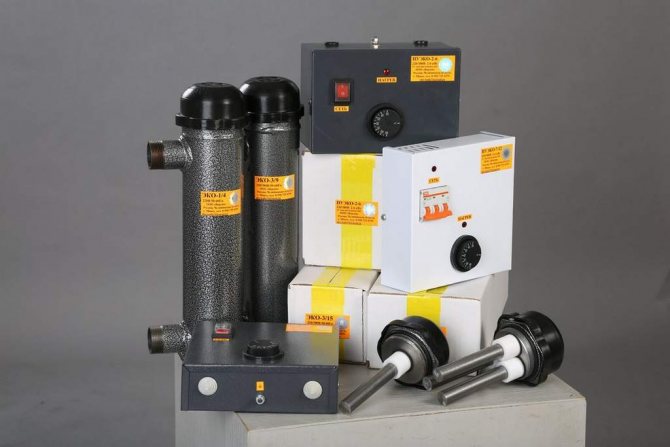

The sizes of ion boilers range from very small, capable of heating only one battery, to large installations designed for a large house. Available with or without housing.
Pros:
- compactness. The device takes up little space without a housing;
- high-speed heating of the coolant;
- low inertia, allowing very precise adjustment;
- resistance to voltage drops;
- a high level of safety - in the absence of a coolant in the boiler, it simply cannot work;
- low price (without control unit, pump and expansion tank).
Minuses:
- complete incompatibility with batteries made of steel and cast iron;
- exactingness to the quality of the circulating fluid, which must have a balanced composition. It is recommended not to do it yourself, but to purchase it ready-made;
- the need for a specialist to check the condition of the coolant before the new heating season;
- special requirements for the ground loop;
- heating temperature - no higher than 75 ° С;
- the need to replace the electrodes at regular intervals.


ELECTRIC HEATING OF A PRIVATE HOUSE
For heating private houses, a fairly limited number of devices are used that are able to provide living areas with the required amount of heat. Mostly used heating systems such as various boilers or convectors.
Boilers are installed to create the main heating systems. Convectors are used more for local heating.
Electric boiler.
A familiar heating system, often used to heat not only private houses, but also apartments. It practically does not differ from gas equipment.
The main feature is only in the energy source that is used, and in the design of the boiler itself. Includes batteries, pipelines, heat carrier that transfers heat from the boiler.
This system is better suited for large areas. It cannot be called economical. The smallest boiler consumes 12 kWh of energy per hour.
By equipping the equipment with controllers that ensure that the rooms are maintained at a certain temperature, you can save a certain percentage of electricity. But even in this case, the use of an electric boiler will remain unprofitable.
Electric convector.
This electric heating system works on the basis of a heating element. The convector consumes from 0.5 to 2 kW per hour. To save energy, the convector is equipped with an electronic regulation that switches off the convector from time to time.It allows you to halve energy costs.
The installation of the convector system is simple and affordable for the average person. Instead of pipes, powerful electrical wiring is being laid in the room. A separate line of electricity from the main switch is required to the dwelling.
The operation of an electric convector system is less expensive than a system with a central boiler. And in the operation of the convector, the energy consumption is not much lower than with boiler heating.
What should be an economical boiler?
Today the choice of thermal systems for space heating is colossal.
In order to choose the right electric boiler for heating an apartment, you need to familiarize yourself with its technical characteristics and dwell on the one in which the advantages are the most:
- Usually, single-circuit boilers are more suitable as an additional heating system, since, unlike double-circuit devices, this is their only function. They may differ in their internal "content" (some models have heating elements, others have electrodes or induction coils), but their common advantage is that they are sold already fully equipped, which allows them to be mounted without the involvement of specialists.
- Some double-circuit electric heating boilers for an apartment building equipped with a storage system that significantly saves energy.Another advantage of these devices is boiler operation, that is, they not only act as a heating system, but also provide unlimited access to hot water.When choosing a double-circuit boiler as the main source of heating, you should pay attention to what is inside it. It is the heating element that provides the required amount of heat. Having calculated in advance what power the device should be, you can choose the most optimal one. It also matters how fast heating occurs. As practice shows, the best for apartment heating is a boiler with an indicator of 8 l / min.
Installation of water heating
Before installing electric heating in an apartment building, it is necessary to develop a connection wiring diagram. In this case, piping refers to the connection of the boiler with other nodes. Drawing up a diagram, they measure the area and height of the premises. After that, they finally determine the type of system (single-circuit or double-circuit), calculate the power of the equipment and its location.
The individual electric heating circuit consists of the following elements:
- Electric boiler.
- Expansion tank.
- Pipes and heating batteries.
- Circulation pump.
- Shut-off valves.
- Thermal sensors.
- Filters.


The advantage of electric boilers over gas boilers is also the possibility of installation anywhere in the apartment. If a gravity system is used, then the heating device is recommended to be installed at the lowest point of the circuit. The unit must be located away from the water supply system: this way a short circuit is excluded in case of water supply leaks.
The heater is powered by an autonomous power line. The calculation of the boiler power provides for taking into account the area of the room, the level of thermal insulation of the dwelling, the number of batteries, as well as the climatic zone in which the house is located. Apartments up to 60 m2 can be equipped with 6-7 kW appliances. The place of installation of heating radiators is traditionally the areas under the windowsills, provided that they completely overlap the width of the window opening. Two batteries can be used if one is not able to cover the specified distance.
Power
The power of the boiler is its most important characteristic, which means that you need to choose it correctly.Sometimes it is tied to the footage and calculated, focusing on the value of 1 kW per 10 m2. This formula is only suitable for a very rough estimate.
USEFUL INFORMATION: Dimensions and characteristics of sanitary hatches for bathroom and toilet
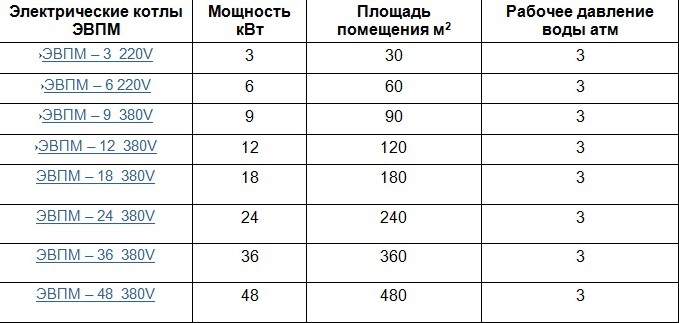

In fact, you need to focus on heat loss. If, for example, they are 8 kW, then you need a boiler of the same power. The calculations take into account:
- area and height of the room;
- the degree of insulation of walls, floors, ceilings;
- the number of external walls and their location on the cardinal points;
- number, dimensions and type of windows;
- battery connection diagram;
- region of residence and other parameters.
To correctly calculate the boiler power, it is recommended to use special calculators or consult a heating engineer.
Electric underfloor heating
Electric underfloor heating is an undoubted option for heating with electricity. There are several options for embodiment, depending on the house:
- Cable heat-insulated floor (wood or polystyrene system);
- Warm mats;
- Infrared film.
All these systems have the same drawback as convectors, they warm up the room for a long time, cool down quickly. In practice, electric underfloor heating is recommended as an additional source of heating or, as it is called, a source of comfortable heating.
A striking example is an apartment. There is central heating, and in case of severe frosts or for additional comfort, we make and turn on heated floors for local purposes (bath, kitchen, nursery).
It is not possible to warm the house with electric underfloor heating alone.
Technical characteristics and types of equipment
Depending on the installation method, electric heating boilers are floor-standing and wall-mounted. The first ones are installed directly on the floor or on special pallets, in most cases they are heavy and require a separate room. Wall-mounted models are lighter and fit in small rooms without problems.
Based on the assigned tasks, there are two types of such units:
- single-circuit is used only for space heating;
- the double-circuit, in addition to the heating function, also heats the water.
The most demanded for a home is an energy-saving heating boiler. Due to the use of modern high-tech materials in it, it was possible to reduce the cost of electricity several times.
Some models of heaters come complete with a pump, due to which forced circulation of the coolant in the system occurs and maximum efficiency is achieved.
Models with an expansion tank are considered safer. They allow you to compensate for the pressure that occurs when the heat carrier is heated and maintain it at a certain level.
No. 8. Warm floors for a country house
Underfloor heating will create the most comfortable conditions for staying in a country house. To equip an electric underfloor heating are used:
- a cable that is laid in waves, stripes or zigzags in the necessary parts of the room;
- infrared film, which works on the principle of infrared heaters and is easy to install. It is even used for arranging a "warm ceiling" and "warm walls".
Underfloor heating is called a more or less economical way of heating due to the presence of an automatic control system and the correct distribution of heat, but still such heating cannot be called cheap. In operation, the film floor will cost less, but the film is more expensive than electrical cables.


The main advantages of electric underfloor heating include:
- ease of installation and operation;
- uniform heating of the entire room;
- security;
- durability;
- the ability to adjust the temperature up to 0.1C;
- no need to allocate space for a boiler, radiators or heaters.
If the area of a country house is large, then it is impossible to consider a warm floor as an independent source of heating.
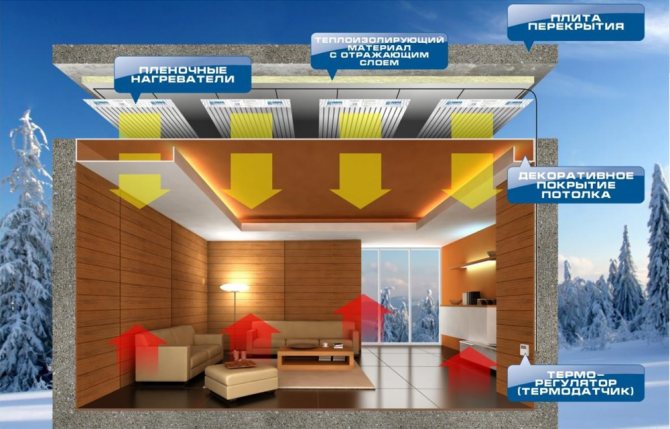

Heating with electricity directly
An alternative to heating using a coolant is considered to be using the principle of direct heating of electricity. The apartment is heated without an intermediate link, that is, there is no coolant in the system. This includes underfloor heating, stationary or portable convectors, etc. Power can be determined automatically or manually.
The cheapest way is a convector. The devices have a thermostat, different configurations and powers. Due to their small size and connection method, convectors can be placed in any apartment. Based on the area of the room, you can calculate the required power of the device.
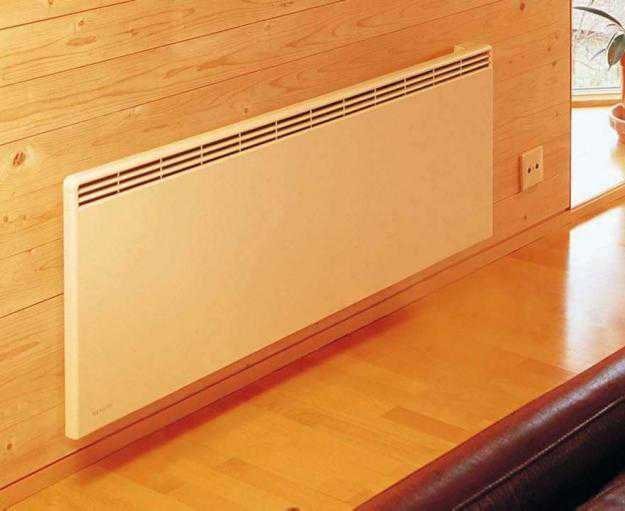

The direct heating system, as mentioned earlier, includes underfloor heating. In a house, the floor is the coldest place. By installing a "warm floor" system that runs on electricity, you can increase the thermal efficiency. With uniform heating, the floor heats the entire living space in natural air circulation.
Don't forget about infrared heaters and electric heaters. In the first version, the air is heated with the help of radiation energy, and in the second, a red-hot conductor transfers thermal energy to the room.
Portable electrical appliances include a heat fan. Forced hot air can quickly heat up the room.
The operation of a heat gun can be compared to a household heat generator. The space is quickly filled with hot air. Most often, the device is used in construction, when it is necessary to dry a certain part of the house in a short period of time.
Calculation of the power of an electric boiler for the house
Power calculation will help you choose equipment with optimal technical characteristics. If you buy a low-power boiler, it will have to work to the limit, but the rooms will still be cool. A too powerful boiler is also not needed. Firstly, it costs much more, and secondly, it will consume too much electricity. When calculating the power of electrical equipment, the average value is taken. When calculating the power of electrical equipment, the average value is taken. Heating of 1 m2 requires 100 W of thermal energy.
To simplify calculations, use the formula:
P = S * k * 100,
Where:
- Р - boiler power;
- S is the area of all premises;
- k is a correction factor.
The heat loss coefficient is different for each region. So for the south of Russia, where the air temperature in winter does not fall below -10 C, it is 0.7. For the Northern Urals with a minimum winter temperature of up to -50 C, the coefficient will be 2. Let's calculate what boiler capacity will be optimal for a house with an area of 110 m2, which was built in the Moscow region.
110 * 1.2 * 100 = 13 200 W or 13.2 kW
In such a house, you can install an economical energy-saving boiler with a capacity of 13-14 kW. These are indicative figures calculated for a house with a ceiling height of 2.5 m, a cold attic and standard-size double-glazed windows If, in addition to heating, an electric boiler will heat water and for hot water supply, the calculated power needs to be increased by 20%.
How to save on electricity
Well, and the last thing I would like to talk about is how to make electric heating in an apartment cheap, but at the same time effective. The first thing that you must consider is that installation will not be profitable without thermostats. It is temperature controllers, especially electronic ones, that allow you to set the optimal temperature regime without overpaying for excess heat.
Another way to save money is to connect multi-tariff energy meters. We have considered the advantages and disadvantages of two-tariff meters. Once again, we note that for each region, the benefits may be different.Still, there are more positive reviews about such devices. Owners of two-tariff electricity meters recommend turning on the heaters at night so that during the day, while everyone is working, the autonomous heating is turned off. Thus, you can save up to half of the electricity consumed, which makes autonomous electric heating in an apartment not very expensive. If you decide to install such meters, be sure to analyze the tariffs for 2020 on the Internet for your city, on the basis of which you will understand whether such devices are profitable or not.
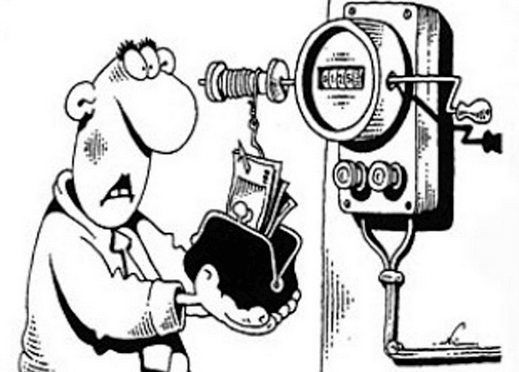

Well, the last way to reduce costs is high-quality insulation of rooms. There are confirmed results that with a bona fide thermal insulation of housing, you can use electric heaters with a capacity of 30-40% less than the calculated one. For example, the calculation of 1 kW / 10 square meters will be reduced to 0.6 kW / square meters. and this is a significant difference.
We also recommend looking at an overview of the use of convectors for heating an apartment:
How profitable are electric convectors
That's all that I wanted to tell you about how to make your own individual heating of an apartment with electricity in an apartment building! We hope that the information was useful and interesting for you! If you have any questions on this topic, be sure to ask our specialists in the category "Question to the electrician"!
How to connect radiators without water pipes?
Application of electric radiators
How profitable are electric convectors
Infrared electric emitters (heaters)
These are powerful sources of scattered infrared radiation (radiant heating), which heats not the entire room, but the place mainly under this heater. Household heaters are available for floor, wall and ceiling designs.
The thermal element of such heaters is a safe heating element. The power of the emitters is from 300 to 600 W. With their help, you can heat a room from 3 to 6 meters.
These sources are used to create comfortable heating conditions, as well as to quickly warm up the room. However, they are practically not suitable for constant heating due to the high cost of the devices themselves and the cost of the electricity consumed.
Modern heating systems
Heating is central, local and individual. Central is when the whole city turns on at the same time: the system of the CHP or boiler houses starts up immediately, and hot water or hot steam went through the pipes. Local - when they build separate boiler houses for a house or several houses. In this case, the inclusion of heat into the houses is much easier, it is enough to start the boiler room - and they will be heated.
Individual heating takes us back to the era when everyone heats himself. And, accordingly, bears the burden of expenses and responsibility for the comfort and health of himself and his household. Which, in fact, has never been canceled for heating a private house. Where everything is done for the house with your own hands.
According to the source of energy for heating, heating systems are divided into wood, coal, gas and electric.
There are also sunny ones, but this is in southern countries, for example, Turkey, where there is a water tank or solar collector on the roof, heated by the sun, and a whole system of modern automation diverts the heated water for heating the premises.
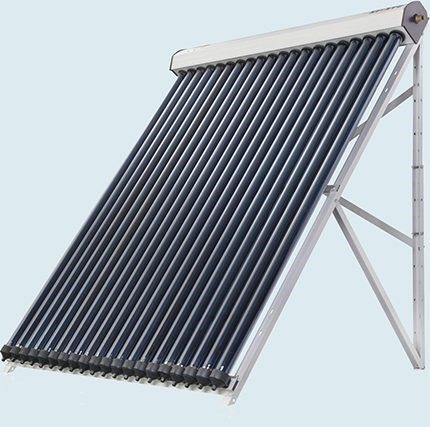

solar collector
There is also heating with thermal waters from underground in places of volcanic activity (Reykjavik, Iceland). Very good and cheap. But…
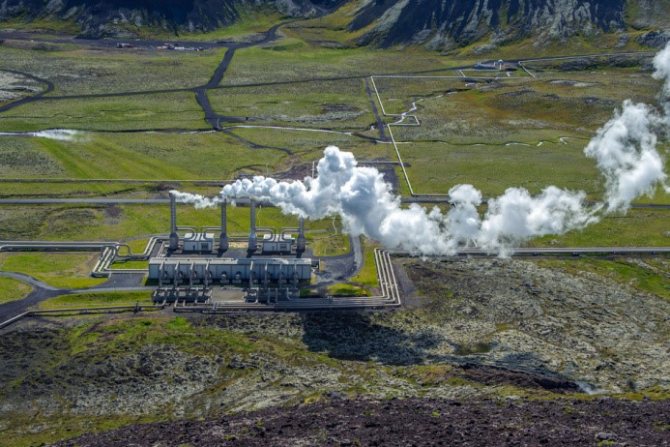

Geothermal Power Plant, Iceland
In any case, regardless of the fuel, the room is heated by a certain working fluid. This is the substance or that environment, from contact with which the room receives heat. On this basis, heating systems are stove (smoke and gas from combustion), water, steam and electric.
The working fluid is just warmed up in the room, where by various physical or chemical phenomena the energy of the fuel is transferred to it for heating. After that, the system is faced with the task of delivering the heat transferred to the working fluid to the room that needs heating. Moreover, a separate important task here is the quality of this transmission with a decrease in losses from "heating the street". As you know, the centralized heating system suffered from this problem: many kilometers of heating mains were very often bare in places and not only lost energy, but often hot water gushed with fountains, which froze, as they moved away "into nature and winter," beautiful, but useless ice stalagmites, and in some places even stalactites.
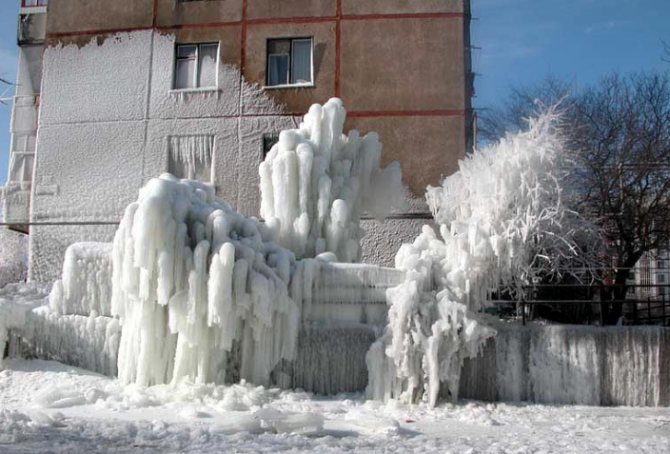

Breakthrough on the heating main
Rules for the device of electric heating in a private house
The device of a heating system for a private house requires adherence to pipe laying diagrams, connecting a boiler, a pump and other elements of the system. In order for the equipment to work correctly, without failures and leaks, a heating project is needed.
The presence of detailed drawings and diagrams minimizes the possibility of installation errors, allows you to correctly determine the boiler power, and choose the right components. The design documentation also includes the creation of estimates. This approach eliminates overspending of materials and allows you to keep within the budget.
Recommendations for the installation of hot water heating using an electric boiler:
- Installation of equipment should only be carried out in a warm room. Installation and start-up of the system is carried out at temperatures above +5 C.
- If, according to the project, the wiring goes along the outside of the wall, then the height between the pipe and the floor should be at least 15 cm.
- The expansion tank and circulation pump are indispensable elements of the system.
